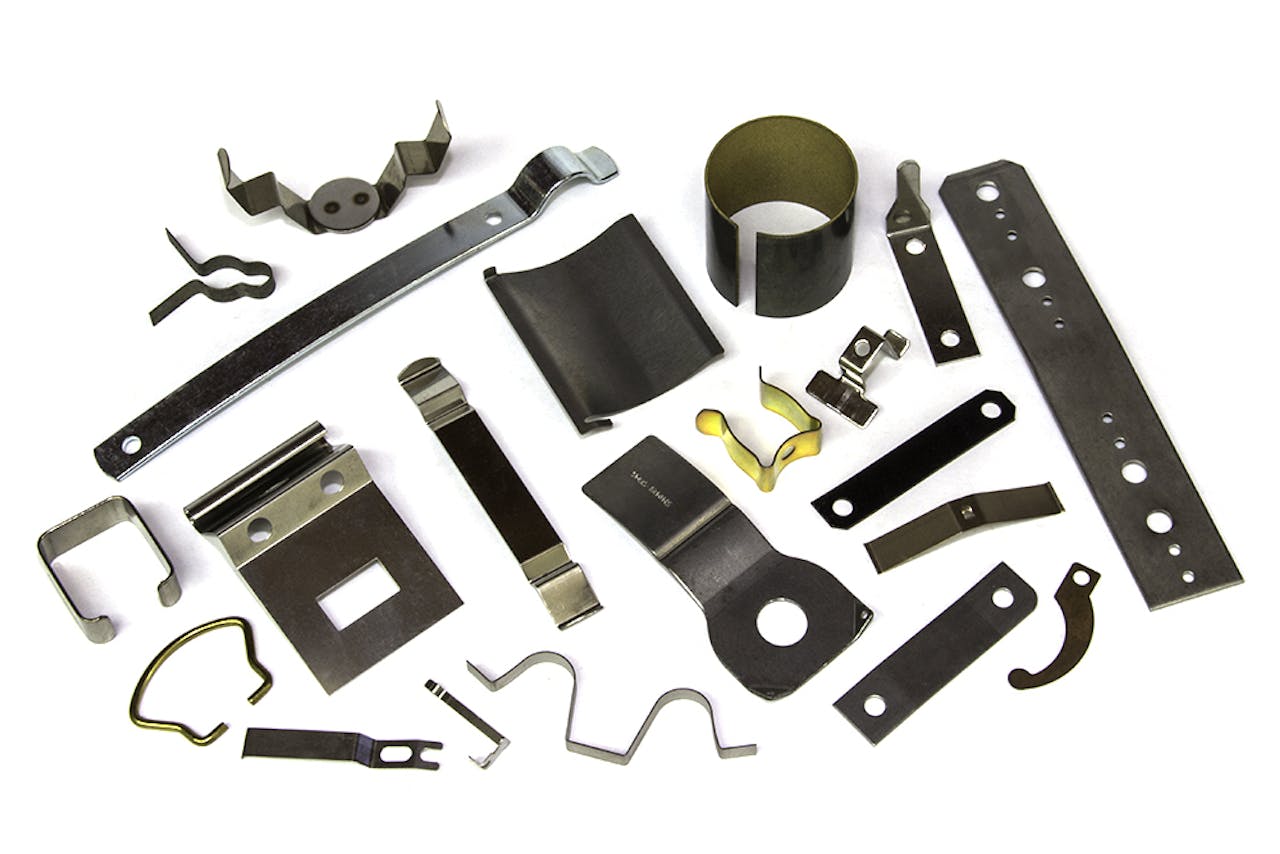Discovering the World of Steel Stamping: From Layout to Manufacturing
Within the world of production, steel marking attracts attention as an exact and effective approach for shaping metal sheets right into numerous types with exceptional consistency. From the first design stage where detailed patterns form to the elaborate manufacturing processes, metal marking is a blend of artistry and design. Digging right into this globe unveils a complicated interplay of creative thinking and technological mastery, providing a glance into a world where advancement fulfills workmanship.
History of Steel Stamping
Steel stamping, a widely used production process today, has a rich history that goes back to ancient times (Metal Stamping). The origins of metal stamping can be traced to old human beings such as the Egyptians, that made use of marking techniques to decorate jewelry and accessories with complex layouts. Gradually, metal stamping advanced, with human beings like the Greeks and Romans using it for creating coins and decorative things

In the 20th century, metal stamping proceeded to progress with the combination of automation and computer mathematical control (CNC) innovation. These improvements better raised the efficiency and precision of steel stamping procedures, making it an important part of contemporary manufacturing throughout sectors such as automotive, aerospace, and electronics. Today, steel marking continues to be a crucial manufacturing process, incorporating tradition with advancement to fulfill the needs of a constantly advancing industry.
Style Factors To Consider and Prototyping
When establishing steel stamping jobs, meticulous interest to create factors to consider and prototyping is crucial for ensuring ideal production end results. Design considerations in steel stamping include product selection, part geometry, tooling layout, and manufacturing usefulness. Choosing the best product is important as it influences the part's efficiency, expense, and manufacturability. Component geometry affects the complexity of the marking procedure and the performance of the last item. Tooling design plays a substantial duty in the success of metal marking projects, influencing component precision, Learn More Here device long life, and manufacturing effectiveness.
Prototyping is a vital stage in the metal marking process that enables designers to examine the layout, validate manufacturability, and make necessary modifications prior to major production. By carefully taking into consideration layout facets and using prototyping, makers can improve the steel stamping process and achieve high-grade, cost-effective manufacturing outcomes.
Tooling and Tools Essentials
Considering the important function that tooling layout plays in the success of steel stamping projects, comprehending the necessary devices and tools called for is extremely important for achieving effective production outcomes. Components hold the metal in area during the marking process, making certain accuracy and repeatability. Spending in top notch tooling and devices not just enhances manufacturing efficiency yet likewise leads to higher precision, minimized waste, and general expense financial savings in steel stamping useful site procedures.
Production Process and Quality Control
Successfully managing the manufacturing procedure and applying robust quality control actions are vital for guaranteeing the success of steel marking projects. The manufacturing procedure in steel marking entails a series of steps that should be thoroughly coordinated to accomplish optimum results. It begins with the preparation of resources, complied with by the setup of the stamping tools and tooling. Operators then feed the materials into journalism, where the marking procedure takes area. Throughout this procedure, it is critical to keep track of the assembly line for any type of issues that may affect the top quality of the stamped parts.
Quality control in metal Source stamping is critical to supply items that meet the called for requirements. Examining the stamped components at different stages of manufacturing assists identify any problems beforehand, avoiding costly rework or scrap. Techniques such as dimensional assessment, aesthetic examination, and product screening are frequently used to ensure the top quality of the stamped components. By keeping strict top quality control requirements, producers can support their track record for delivering top quality steel stamped products.
Applications and Industry Insights
In the realm of steel stamping, the effective application of production processes and high quality control actions directly affects the performance and reliability of various sector applications and gives important understandings into the industry's operational characteristics. Additionally, metal marking facilitates the manufacturing of different family home appliances, consisting of fridges, washing makers, and ovens, by giving affordable solutions for manufacturing durable and complicated components. Recognizing the applications and industry understandings of metal marking is essential for enhancing production processes and improving item top quality throughout various sectors.

Conclusion
Design factors to consider, prototyping, tooling, tools, manufacturing procedures, and quality control are important elements of steel stamping. With its extensive applications and industry understandings, steel stamping continues to be a functional and effective manufacturing procedure.